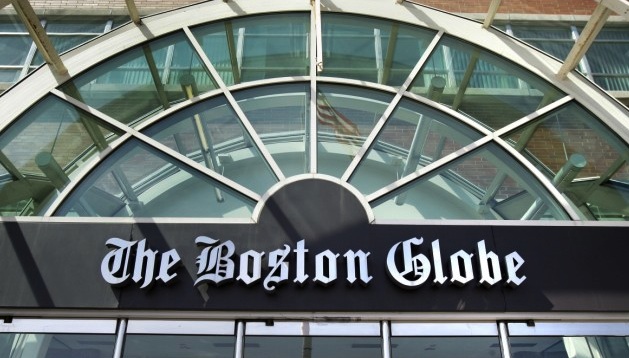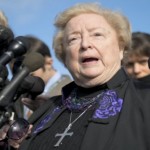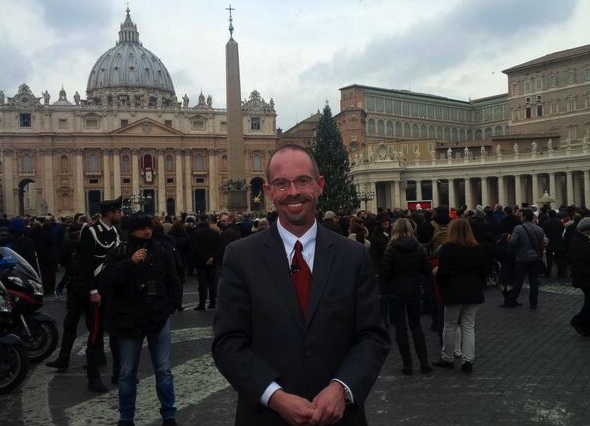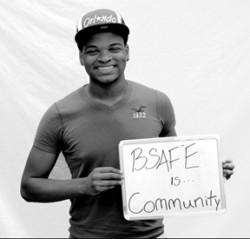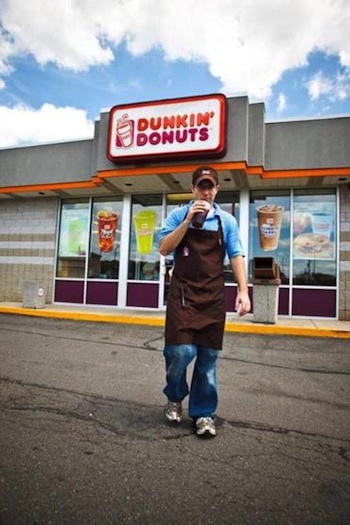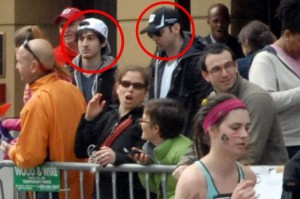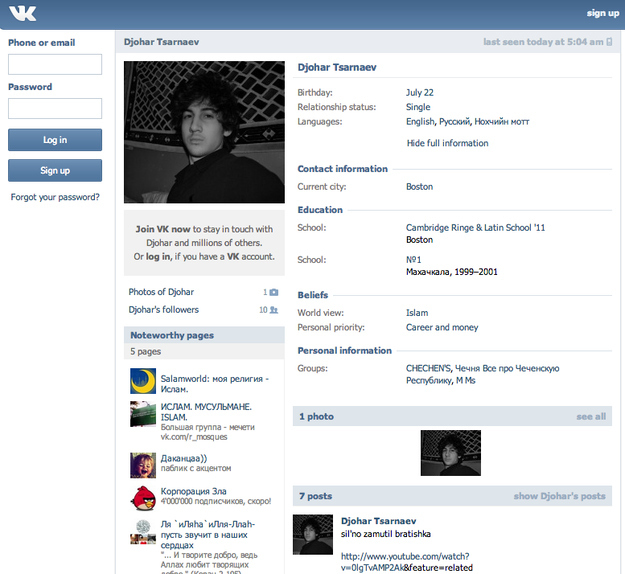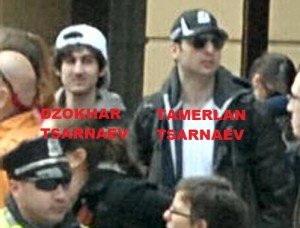Last updated on: April 24, 2013 at 11:46 am
By
mollie
The latest headlines give some indication of where the Boston bombing story is going. From the New York Times, for instance:
Bombing Suspect Cites Islamic Extremist Beliefs as Motive
A more informative article from the Associated Press is headlined:
Tamerlan Tsarnaev, Influenced By Mysterious Muslim Radical, Turned Towards Fundamentalism
Headlined in the Huffington Post, I hasten to add, since the “F” word violates the AP Stylebook. It begins:
In the years before the Boston Marathon bombings, Tamerlan Tsarnaev fell under the influence of a new friend, a Muslim convert who steered the religiously apathetic young man toward a strict strain of Islam, family members said.
Under the tutelage of a friend known to the Tsarnaev family only as Misha, Tamerlan gave up boxing and stopped studying music, his family said. He began opposing the wars in Afghanistan and Iraq. He turned to websites and literature claiming that the CIA was behind the terrorist attacks of Sept. 11, 2001, and Jews controlled the world.
“Somehow, he just took his brain,” said Tamerlan’s uncle, Ruslan Tsarni, who recalled conversations with Tamerlan’s worried father about Misha’s influence. Efforts over several days by The Associated Press to identify and interview Misha have been unsuccessful.
We focus on religion angles and how they are treated in the media, and will continue to do so in this and subsequent posts. That should not be interpreted as reason to focus exclusively on those angles. Journalists should heed the counsel of terrorism experts when they caution that “Complex rather than single causality is the norm, not the exception, for terrorism.” It’s definitely an egregious error to downplay the role religion plays in stories but that doesn’t excuse an exclusive focus on it.
The AP article suggests that Misha and Tamerlan met at a local mosque, though that mosque isn’t identified. I’ve been particularly intrigued with stories about the mosque(s) that the Tsarnaev brothers attended. Initial reports stated that no local mosques had heard of the brothers. By now we’re progressing to stories such as the Associated Press one above. I don’t even know if I can find it but I read a Boston Globe story that had a video featuring Suhaib Webb, an imam at a sister mosque. The story and the accompanying video emphasized how very moderate those mosques were — and how Tamerlan found their moderation difficult.
So I was surprised when some folks sent me a video suggesting that the mosques themselves had ties to radicals. I won’t link to it because the very first item the video mentioned had an error. It said that the founder of the mosque the brothers attended was sentenced to prison for his role in an Al Qaeda plot. I looked it up and found that description lacking. He is serving a 23-year sentence for his role in a terror plot, but it wasn’t identified as an Al Qaeda plot. I should add that when I looked up the name of the imam in the Globe video mentioned above, I saw this FBI document about how he had appeared at a legal defense fundraiser for Jamil Abdullah Al-Amin, a Muslim man on trial for (and later convicted of) killing two police officers … with U.S. citizen and drone victim Anwar al Awlaki back in 2001.
It got me thinking. Are these things newsworthy? Politically, there’s an argument for balance that might be described as finding a middle ground between ignoring the role of Islam, and putting the “Muslim community” under surveillance? There’s a journalism corollary to this, I’m sure. So how does one present this information?
USA Today took the approach of investigating various ties the mosques have to terrorists and just laying it all out there. Headlined, “Mosque that Boston suspects attended has radical ties,” it begins by saying several people who attend “have been investigated for Islamic terrorism, including a conviction of the mosque’s first president, Abdulrahman Alamoudi, in connection with an assassination plot against a Saudi prince.” It adds that the sister mosque has invited guests who defend terror suspects and that a former trustee advocates “treating gays as criminals, says husbands should sometimes beat their wives and calls on Allah (God) to kill Zionists and Jews.”
It might be helpful to know a little bit more about mainstream Muslim thought on some of these topics. And I’d like to hear the comments in context, to know if they’re accurately conveyed. It quotes someone saying that the curriculum of the mosque radicalizes people and that other people have been radicalized there. It includes this quote in response:
Yusufi Vali, executive director at the Islamic Society of Boston Cultural Center, insists his mosque does not spread radical ideology and cannot be blamed for the acts of a few worshipers.
“If there were really any worry about us being extreme,” Vali said, U.S. law enforcement agencies such as the FBI and Departments of Justice and Homeland Security would not partner with the Muslim American Society and the Boston mosque in conducting monthly meetings that have been ongoing for four years, he said, in an apparent reference to U.S. government outreach programs in the Muslim community.
Now, considering that some groups have been questioning the U.S. government’s involvement with some mosques — and the FBI’s lack of interest in the brothers despite repeated warnings — perhaps a response to this quote would have been in order. But it’s already pretty long and there’s not space for every back and forth. The article again mentions that the two mosques share an owner and later on they mention that they’re both affiliated with the Muslim American Society.
The article states that the FBI has not indicated that either mosque was involved in the terrorism commited by the Tsarnaev brothers. But it does list some of the attendees and officials who have been “implicated” in terrorist activity. And it’s an impressive list:
• Abdulrahman Alamoudi, who signed the articles of incorporation as the Cambridge mosque’s president, was sentenced to 23 years in federal court in Alexandria, Va., in 2004 for his role as a facilitator in what federal prosecutors called a Libyan assassination plot against then-Saudi crown prince Abdullah. Abdullah is now the Saudi king.
• Aafia Siddiqui, who occasionally prayed at the Cambridge mosque, was arrested in Afghanistan in 2008 while in possession of cyanide canisters and plans for a chemical attack in New York City. She tried to grab a rifle while in detention and shot at military officers and FBI agents, for which she was convicted in New York in 2010 and is serving an 86-year sentence.
• Tarek Mehanna, who worshiped at the Cambridge mosque, was sentenced in 2012 to 17 years in prison for conspiring to aid al-Qaeda. Mehanna had traveled to Yemen to seek terrorist training and plotted to use automatic weapons to shoot up a mall in the Boston suburbs, federal investigators in Boston alleged.
• Ahmad Abousamra, the son of a former vice president of the Muslim American Society Boston Abdul-Badi Abousamra, was identified by the FBI as Mehanna’s co-conspirator. He fled to Syria and is wanted by the FBI on charges of providing support to terrorists and conspiracy to kill Americans in a foreign country.
• Jamal Badawi of Canada, a former trustee of the Islamic Society of Boston Trust, which owns both mosques, was named as a non-indicted co-conspirator in the 2007 Holy Land Foundation terrorism trial in Texas over the funneling of money to Hamas, which is the Palestinian wing of the Muslim Brotherhood.
The article also mentions a little bit about the Muslim American Society:
(more…)

